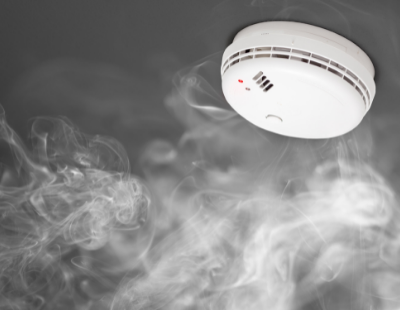For landlords looking to find tenants fast, London-based lettings agency Douglas & Gordon has put together a 12 tip guide to ensure landlords have a smooth letting process – perfect for getting your home off the market as soon as possible.
1. Energy Performance Certificate (EPC) - Your property needs one before we can get it on the market. EPCs rate the energy efficiency and environmental impact of your property, on a scale from A to G. You’ll need an energy efficiency rating of E or above to rent your property. Thankfully, an EPC lasts 10 years.
2. Electrical Installation Certificate Report (EICR) - Another must, a satisfactory EICR report is required. Great news, these also last for five years, but must be compliant with the 18th edition of the wiring regulations.
The electrician will test 10 to 20 per cent of the wiring in the house and will also test sockets, switches, lights and the fuse board. If by any chance the EICR is substandard the remedial work will need to be carried out before the tenancy can begin
3. Gas - Nobody likes to talk about gas, but your property must have a valid certificate making sure all appliances are safe to use. These last a year, with your chosen agent and tenant required to have a copy of the valid certificate.
-
4. Portable Appliance Testing (PAT) - All your portable appliances should be safe to use for your tenants. Make sure this is the case and book in a PAT test and this only needs to be done once a year.
5. Smoke & Carbon alarms - It’s a given that all properties require a working smoke alarm on every floor of the property. Don’t forget, carbon monoxide alarms are also necessary where there is an open flue or wood burning appliance. If your property requires a licence, the Local Authority may require a hard-wired smoke alarm.
6. Fire & Furnishings - In line with the Furniture and Furnishings (Fire Safety) Regulations 1988, you will need to make sure that all furniture in your property has the necessary necessary labelling to prove that it is fire safe. This includes any upholstered furniture, soft furnishings, beds, mattresses, pillows, headboards, seat pads etc.
7. Referencing - All tenants are referenced to ensure they are the best suit for your property.
8. Licensing - There are three types of licencing in accordance with The Housing Act 2004. Mandatory House of Multiple Occupancy (HMO) is nationwide and applies to properties with five or more occupants from two or more households. Additional HMO Licensing is borough dependent and applies to properties with three of more occupants from two or more households. Selective licencing is borough-dependent and depends on the street the property is on.
9. Cleaning - Keep it clean in between tenancies and before new tenants move in, we recommend that the property is professionally cleaned. This helps with the inventory and sets a standard for the tenants when they move out.
-
10. Inventories (Check ins and outs) - A great way to ensure this, is to get a professional inventory carried out. Using a trusted third party, they will go through the inventory and complete a check-in and check-out schedule. This will minimise the risk of any disputes between yourself and tenants about the condition of the property.
11. Legionella - As a landlord you have a duty of care to ensure that the necessary precautions are taken to avoid stagnation of water that could lead to the growth of Legionella. This includes the following:
- flushing out the system prior to letting the property
- avoiding debris getting into the system (e.g ensure the cold water tanks, where fitted, have a tight fitting lid)
- setting control parameters (eg setting the temperature of the hot water cylinder (calorifier) to ensure water is stored at 60°C)
- make sure any redundant pipework is removed.
-
12. Blind cords - New blinds with looped cords must have child safety devices installed at the point of manufacture or sold with the blind. However, blinds installed earlier may not have these features.
Fit a tidy, tensioner or a cleat: tidies and tensioners should be firmly fixed to an adjoining surface so that the cord or chain are permanently held tight. Cords should be fastened in a figure of eight after every use of the blind, making sure all the spare cord is secured on the cleat.
Want to comment on this story? If so...if any post is considered to victimise, harass, degrade or intimidate an individual or group of individuals on any basis, then the post may be deleted and the individual immediately banned from posting in future.














.png)





Join the conversation
Please login to comment